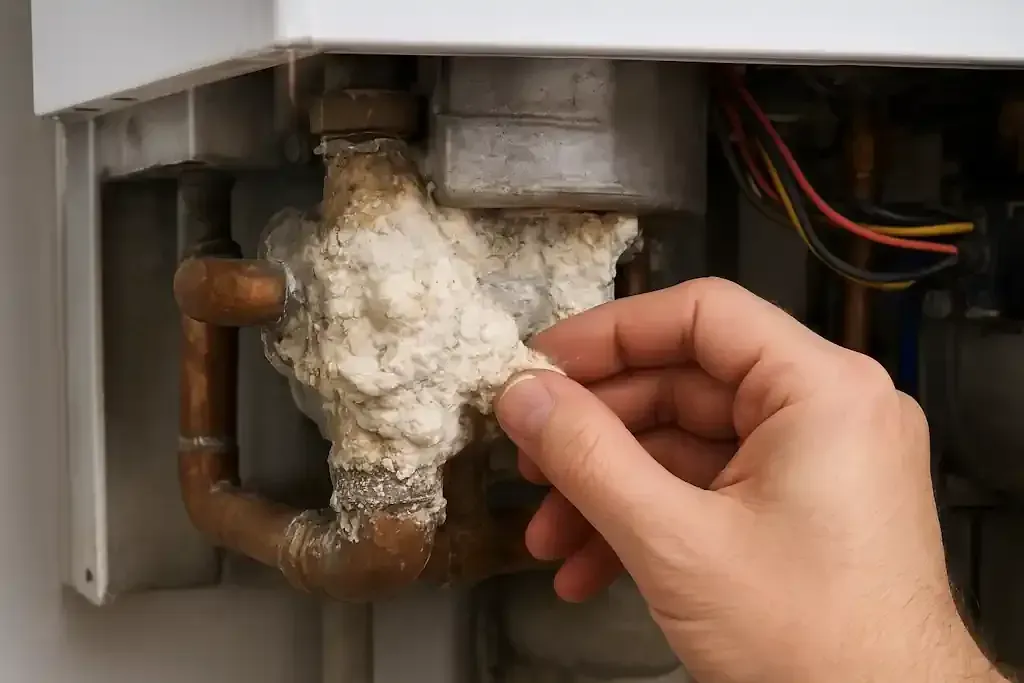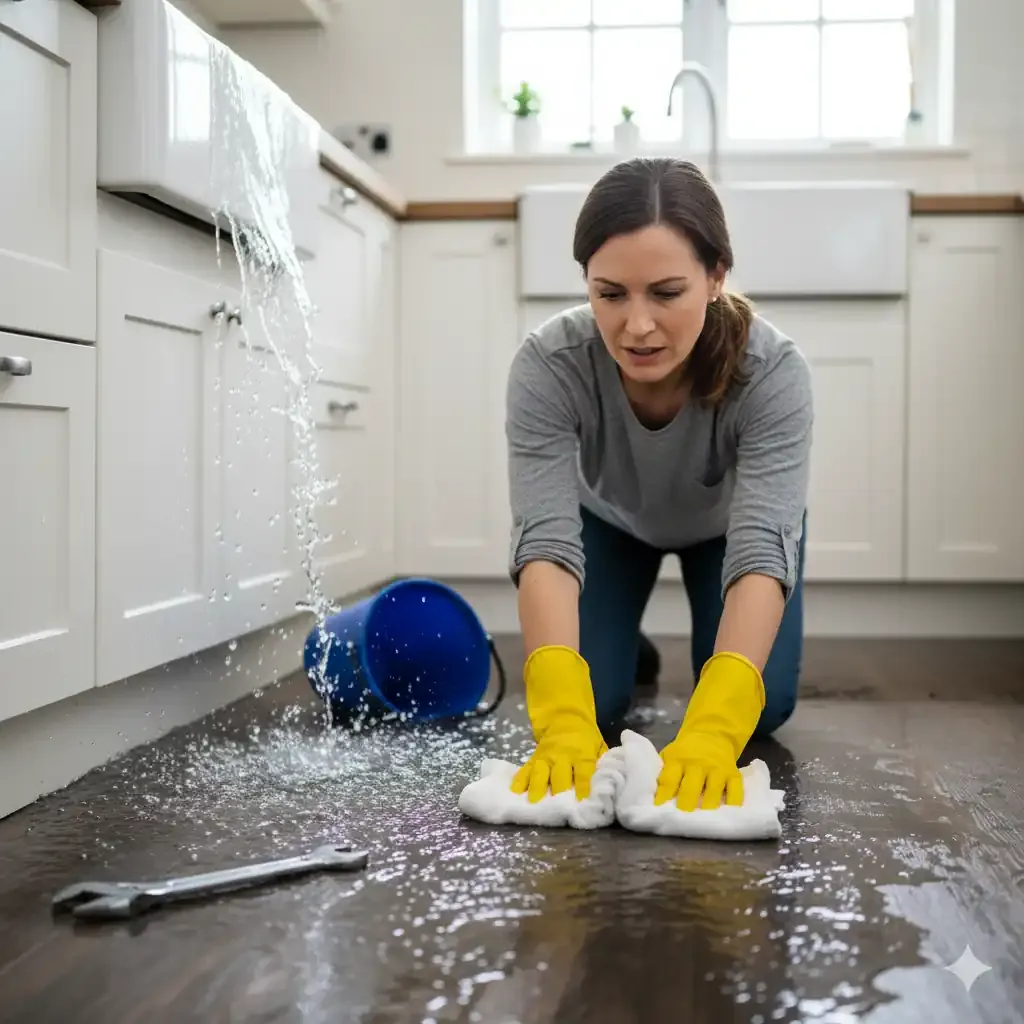How to Replace a Toilet Seat
How do you Replace a Toilet Seat?
Installing or replacing a toilet seat is a fairly straightforward job you'll probably find yourself doing at least once as a homeowner. Whether you’re replacing your loo seat because it’s old, damaged or you want a new style; all you’ll need are some basic tools that we guarantee you already have at home or at least know someone that has.
Fitting a toilet seat is one of the easier and quicker DIY jobs in your bathroom, and can be done in a matter of minutes. So without further do, here's our complete guide that explains the step-by-step process of fitting a toilet seat. We cover
How To Measure A Toilet Seat
Before you go shopping for a toilet seat to install, make sure you take measurements to help you buy the right size. If you are replacing the toilet seat, it's worth having the new one there ready to be fitted once the old one is taken off. So when taking the measurements, you need to focus on three key points:
- The length of the bowl from between the seat bolts to the outside edge of the front of the bowl. NOTE: This size depends on whether you have a round or an elongated bowl.
- Measure the distance between bolts and where the toilet seat attaches to the bowl. For your reference, the standard measurement for a UK toilet seat between the fixing holes is 155mm.
- Measure the width of the bowl at its widest point. When taking this measurement, place your tape measure on the outside of the brim to ensure accurate dimension.
What Tools Do I Need To Change A Toilet Seat?
In order to fit a brand new or replacement toilet seat, you need to make sure you have access to particular tools to make the task easy for yourself. You need:
- Tape measure — this is essential in taking your toilet seat measurements before going to buy a replacement.
- Pliers/ adjustable wrench — use these to remove the nuts that secure the seat to the toilet.
- Flathead screwdriver — use this tool if the nut heads are covered with plastic caps.
- Spray lubricant or soap solution — if your toilet seat is fixed using metal screws, you’ll need to spray them with a lubricant before unscrewing. But if you have plastic screws, then you should use a soap solution.
How To Remove An Old Toilet Seat
Installing a new toilet seat is easy as all you need to do is tighten the nuts with a wrench and a pair of pliers. However, things get a little more difficult years down the line when you want to uninstall the seat and replace it with a new one. Why? Well, the humidity and lack of ventilation behind the toilet seats makes the bolts corrode. When that happens, removing the seat will require: spraying lubricant, drills, locking pliers, and deep socket wrenches.
The difficulty or ease of removing the toilet seat solely depends on whether you have plastic or metal bolts. In the case that you used plastic bolts, the removal process will be easier. You only need to spray the bolts with a soap solution and then unscrew the nuts. Why use a soap solution? The soap solution is there to prevent the threads from stripping.
On the other hand, removing metal bolts is quite a chore, especially when working under the toilet. In this case, you’ll need to lubricate the bolts with a lubricant for about five minutes before trying to unscrew them.
Step 1
When removing the old seat, start by taking off the bolt caps at the edge of the seat, where the seat’s hinges attach to the bowl. Some bolts have the caps while others don’t. If your toilet has them, use the flathead screwdriver to pry them off gently.
Step 2
Now use the adjustable wrench to loosen the two nuts on each side of the toilet. Attach the wrench on each of them and turn it counterclockwise to loosen the nuts (remember lefty loosey, righty tighty).
Step 3
Then you need to remove the bolts. These are located at the base of the hinges, on top of the toilet bowl. Their location makes it difficult to remove them with something like a screwdriver, so you'll need to use your hands to turn each bolt counterclockwise until they come off. If the seat has washers, make sure you remove them as well.
Step 4
If the bolts are stuck due to rusting (this is very normal), you’ll need to wrestle with them until they come off. In this case, the first thing to do is spray the bolts with a lubricant and let them rest between ten to fifteen minutes before you start unscrewing again. If the lubricant doesn’t help loosen the bolts, simply hold the wrench on the nut as you use the screwdriver with the other hand to try and untighten it. If this proves unfruitful, you'll have to use a small hacksaw to cut them off.
Step 5
Once you manage to remove the old toilet seat, you simply dispose of it.
How To Install A New Toilet Seat
After you've taken the old toilet seat off, it’s time to install the new one. You can do this by following the four simple steps below.
Step 1
Unpack the new seat and set it in place on the toilet unit. Ensure that the hinges of the new seat line up precisely where the hinges of the old one were.
Step 2
Now take the bolts and drop them in place through the holes in the hinges. If you place the new seat in the exact position the old seat was, inserting the new one will be easy as the hinges holes will be directly on top of the bowl seat. When dropping the bolts through the hinges and bowl holes, ensure that the head is facing upwards as this prevents the bolts from falling through.
Step 3
Once the bolts are in place, pick up one nut and turn it clockwise (righty tighty) on one of the bolts. You should see the bolt ends sticking through the top of the bowl. Tighten the nut using an adjustable wrench. Repeat the process with the other nut and bolt. If the bolts have plastic caps, simple snap them in place by firmly putting them down the bolt heads.
Step 4
If you bought a toilet seat model that doesn’t require driving bolts through the hinges, drop the bolts on the holes located on the side of the toilet bowl. Once the seat snaps in place, fix them in place using the nuts. Refer back to the user manual throughout the process of installing the seat to make sure it is done correctly.
FAQs about toilet seats
Why Should I Replace My Toilet Seat?
Toilet seats don’t come with an expiration date, therefore it's hard to tell if it’s time to replace it or not. Generally, toilet seats tend to last for 5 to 7 years before you can think of replacing them. However, other factors can prompt you to change the toilet seat sooner than that. Find below some of the common reasons for replacing a toilet seat in your home:
- If the seat is broken — if your toilet seat is broken, the cracks are breeding grounds for bacteria. Before that happens, invest in a brand new toilet seat.
- If the toilet seat becomes loose — one of the significant signs that your toilet seat is loose is when it starts moving. A loose toilet seat poses hygiene and safety concerns and needs constant tightening. If you find yourself having to tighten the seat now and then, this is a sign it’s time to replace it.
- When your child starts potty training — you might need to replace your toilet seat if your child is ready to start potty training. In this case, you need a small toilet seat that fits securely inside the big toilet seat to help with training.
- Moving to a new house — one of the essential things you need to do when you move to a new home is to replace the toilet seat. The former tenants might have cleaned the toilet seat before moving out. However, replacing the toilet seat allows you to deep clean under the bolts and hinges and disinfect every hidden part of the seat. So make it a must do the next time you move house.
Does It Matter What Size Toilet Seat You Buy?
Toilet seats come in different sizes but since it’s not every day that you go toilet seat shopping, you may not be aware of the various standard toilet seats available. It’s therefore advisable that you take the measurements of your old one to ensure you buy a toilet seat of the right size.
Are Toilet Seats A Standard Size?
The first thing to understand when deciding on the size of your toilet seat is whether you have an elongated or round bowl. Again, you can tell what kind of toilet seat you have by taking simple measurements. Generally, the round toilet seats measure about 16.5inches, while the elongated ones measure around 18.5inches. Once you understand the toilet seat shape you need, you are all set to go and buy the one you want.
Do I Need To Take Any Safety Precautions Before I Change My Toilet Seat?
Before you remove and replace the toilet seat, remember that toilets are habitats for harmful germs. Exposure to these germs can lead to illness and infections. Therefore you must take the necessary precautions before starting the task.
Some of the essential measures to take include:
- Wearing rubber gloves
- Cleaning the toilet before removing the seat
- After removing the seat, clean the toilet again thoroughly with an anti-bacterial spray/ wipes (don't flush the anti-bacterial wipes - put them in the bin)
- Once you’re done changing the seat, wash your hands using an anti-bacterial hand wash
What Types Of Toilet Seats Are There?
There are two types of toilet seats:
- Soft-close toilets — these toilets have a gentle closing mechanism that prevents the lid from banging when closing. This is the best type to give your bathroom a stylish look and avoid trapped fingers.
- The standard close seats — these can be made of various materials and are often chosen by people who want an easy-to-install toilet seat that suits any bathroom.
What Shape Toilet Seats Are Available?
Toilet seats are available in two shapes:
- Round toilet seats — this is the most common type of toilet seat. It is round in shape, costs less, and is most suitable for a small toilet space.
- Elongated toilet seats — these are oval-shaped and are a bit longer than the traditional round toilet seats. These seats are usually more comfortable but tend to be a bit more expensive.
What Material Can Toilet Seats Be Made Out Of?
Toilet seats come in various materials and have different features. For instance, the plastic seats are available in many different colours but can get very cold during winter. Wooden seats are warmer but can stain quickier. Cushioned toilet seats are very comfortable but tend to crack and split over time.
So when choosing the material, it is up to you to decide between the pros and cons of either one - which shortcoming is easier to deal with in your opinion?
Need a toilet expert to help?
Call Assett Plumbing today on 01604 372395 for toilet or toilet seat advice, for any plumbing work or plumbing emergency in your area. We have local plumbers in your area and can usually attend a plumbing emergency within 30 minutes.



